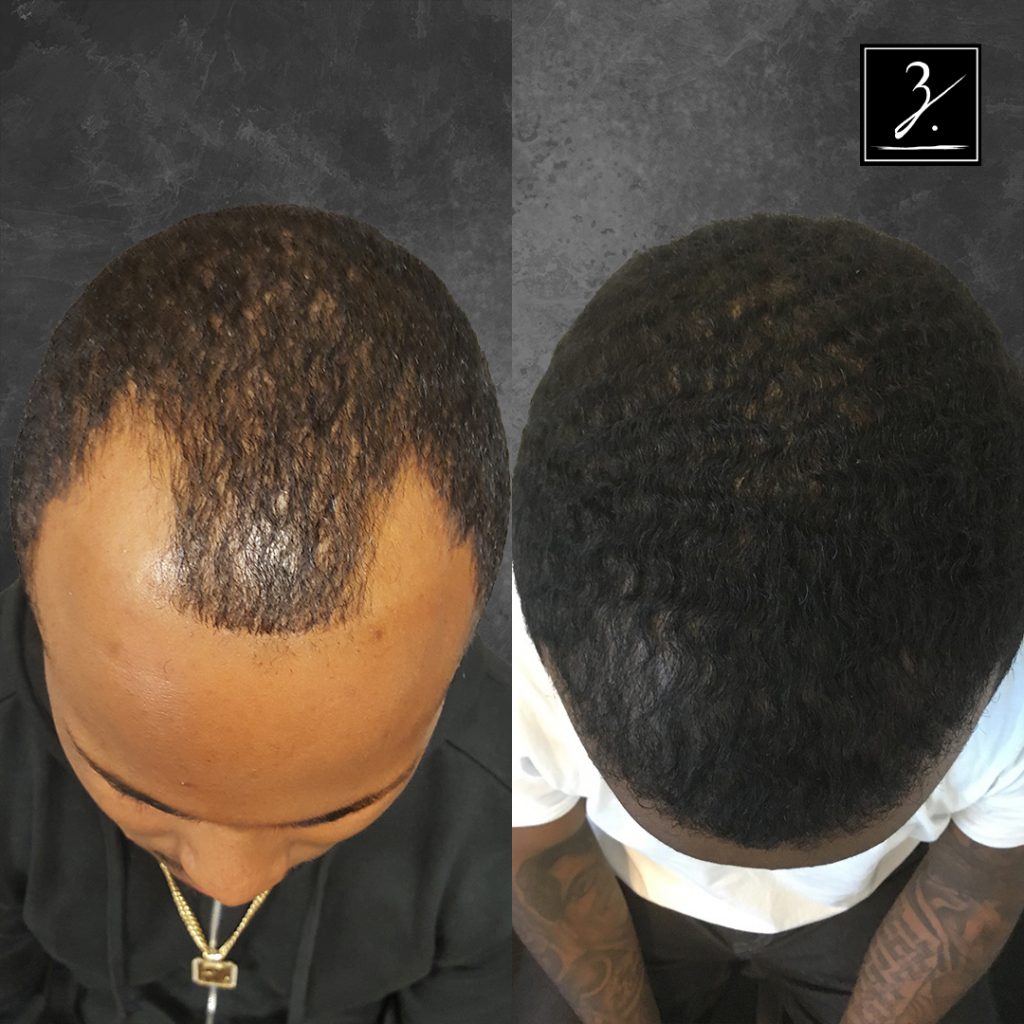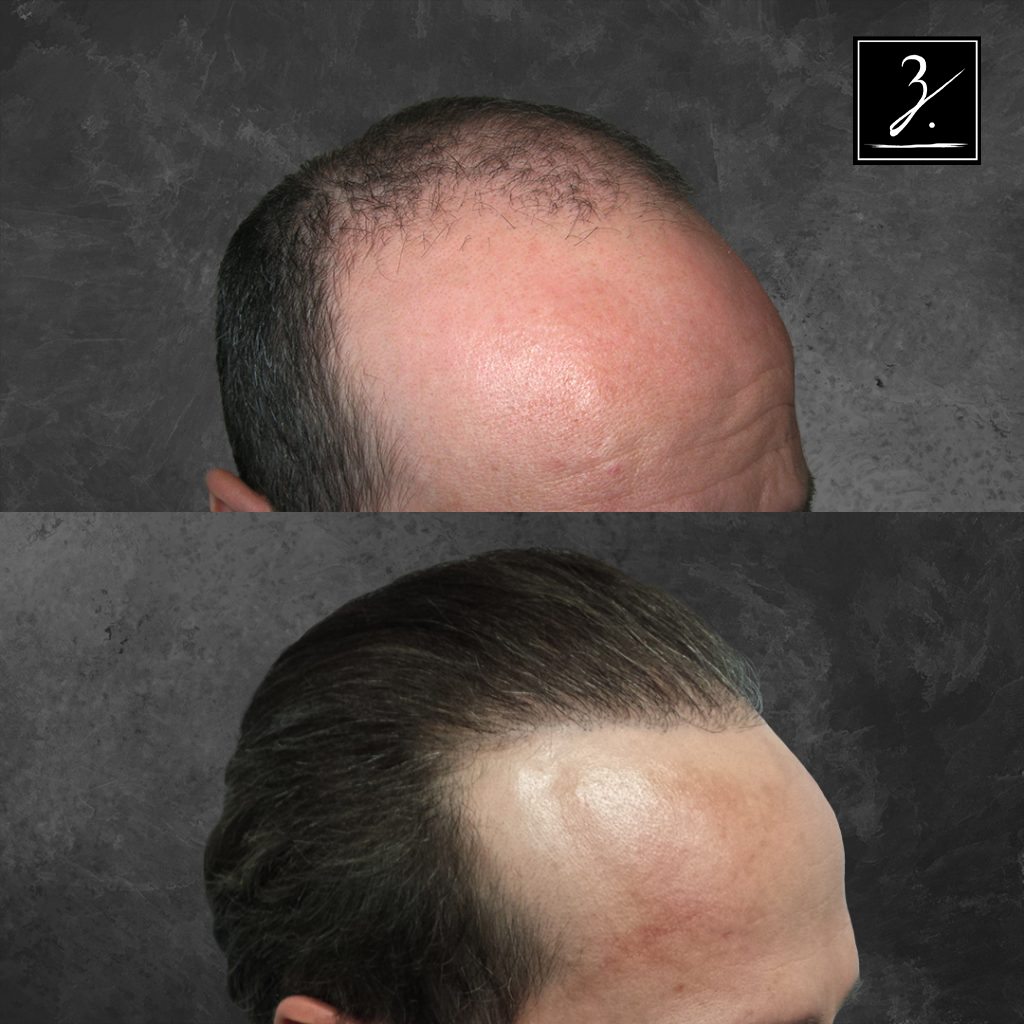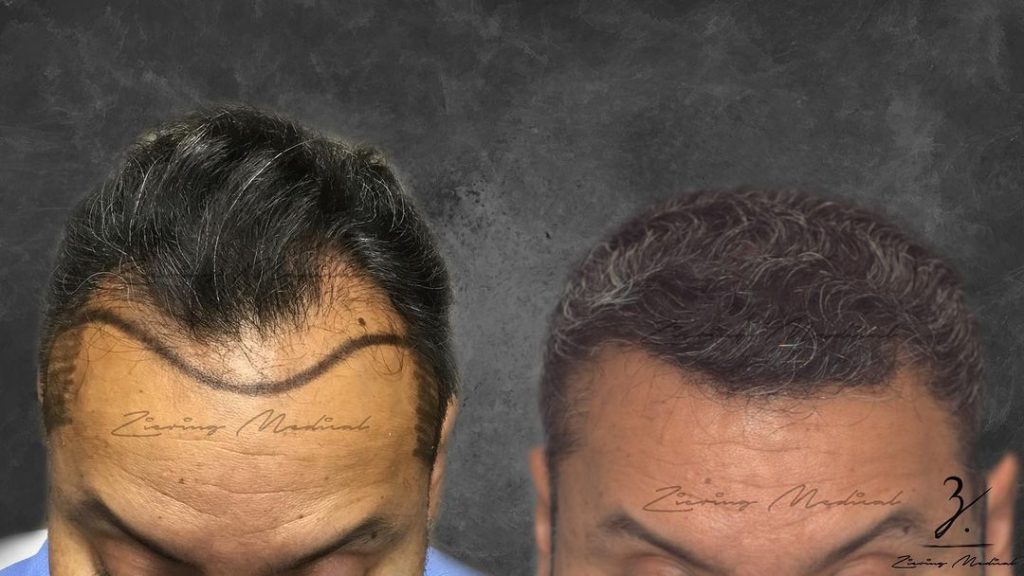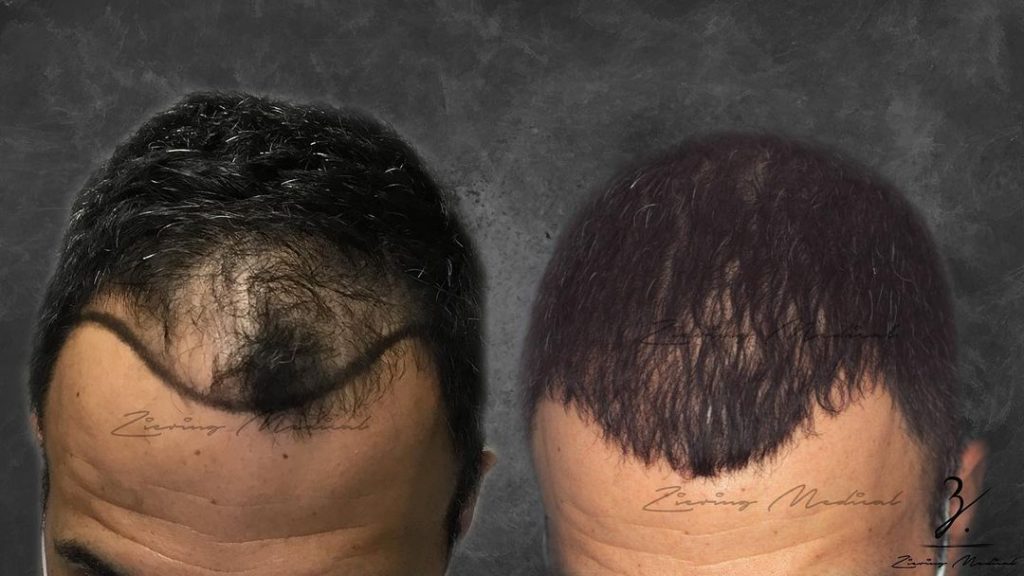FUE Hair Transplant surgery
Surgical hair restoration is constantly evolving thanks to physicians in search of better options for their patients.
Follicular Unit Excision and Extraction (FUE) is a minimally invasive hair transplant method where individual hair grafts are harvested one at a time from the donor area—typically the back and sides of the head. To improve visibility and precision during the donor harvest step of this hair surgery, this area is usually shaved short.
FUE is often preferred over the traditional MDEE®️ method because it doesn’t leave a linear scar and generally offers a quicker recovery. For patients who do not want to completely shave the back and sides of their head, the Hidden Shave or No Shave FUE technique may be an option to consider.
Hidden Shave FUE or No Shave FUE are techniques in which only select and very small areas across the donor zone are trimmed in a way that’s concealed by the longer surrounding hair, or not shaved at all. This allows patients to maintain their hairstyle with no visible signs of surgery.
It’s ideal for those seeking a discreet option with minimal downtime, though it’s more time-consuming and best suited for much smaller sessions or touch-ups.
Here is an overview of the FUE hair surgery procedure:
DONOR AREA PREP
DONOR HAIR HARVEST
PREPARATION OF HARVESTED GRAFTS
CREATION OF RECIPIENT SITES
PLACEMENT OF THE HAIR GRAFTS
FUE Hair Surgery Technology
Recent improvements include:
- Smaller punches that reduce scarring
- Motorized punches that refine the way surgeons score the upper layer of skin
- Restricted depth of scoring to better protect the follicular unit grafts
- Understanding the need to limit excisions to prevent obvious scarring
- Isolates the follicular units from the surrounding area of the scalp
- Allows the surgeon to extract follicular units directly from the scalp
- Minimizes damage to follicles during extraction
Who is an ideal candidate for FUE hair surgery?
FUE hair transplants are suitable for a wide range of candidates but tend to be a preferred choice for younger men looking to have or maintain shorter hairstyles and who are looking to avoid the linear scar from MDEE® hair transplants. It is also a good option for any patient whose scalp is too tight or doesn’t have enough laxity for a strip harvest or MDEE® procedure. Because FUE procedures normally involve harvesting fewer grafts than MDEE® procedures, they are ideal for patients looking for smaller-scale surgical hair restoration or who have had previous hair transplant procedures and are nearing donor depletion.
It is important to note that FUE is not the most desirable option for most women. This is primarily because the procedure involves shaving the back and sides of the head to access the donor area. This necessity for a close shave doesn’t usually align with the preferred hairstyles of many women. Also, women tend to have a smaller donor zone with less density. Because an MDEE® hair transplant does not require shaving the entire back and sides of the head, it is commonly recommended for women who are good candidates for surgical hair restoration.
What to Expect During the FUE Hair Surgery Healing and Recovery Process
In the first few weeks, some of the transplanted hairs may shed. This is a natural part of the healing and recovery process, as the follicles prepare to enter the growth phase. You may have shed the hair, but you have not lost the hair bulb or root that was transplanted below the scalp. For the next 3 months, the transplanted follicles enter a dormant phase. During this time the roots are getting established beneath the surface. Early hair growth will appear around 3 – 4 months. This new hair is usually very soft and fine, but it will thicken as it matures over the next several weeks and months. From 6 – 12 months, the majority of patients experience significant hair growth. The transplanted hair continues to thicken and blend into the existing hair while also restoring balding and thinning areas. This process is so gradual that patients frequently comment that they begin receiving positive comments about their restored youthful appearance without anyone knowing that they have had a hair transplant procedure.
By the end of the first year, most patients are enjoying the full results of the FUE hair transplant. Understanding the timeline for hair growth post-FUE is essential for managing expectations, and individual experiences may vary. While FUE hair transplants deliver a permanent solution, ongoing hair loss management strategies may include a maintenance routine of non-surgical treatments and therapies to keep your hair healthy and prevent future hair loss. Embarking on a FUE hair transplant journey is a transformative experience that goes beyond just the hair restoration process and procedure. It’s about reclaiming confidence and embracing a renewed sense of self. With advancements in technology and the skilled hands of experienced surgeons, FUE offers a state-of-the-art solution for those seeking a permanent remedy for hair loss.
FUE Hair Surgery Results


7755 Total Follicular Units, 2 MDEE® + 1 FUE Hair Transplants, Showing Pre-Op and 24 Months Post-Op



During your consultation, both MDEE® and FUE procedures will be reviewed so that you can make an informed decision with your Ziering surgeon when selecting your preferred donor harvest method. It is not uncommon for patients who require more than one hair transplant procedure to achieve their aesthetic hair goals to have both types of procedures. Sometimes the MDEE® procedure is performed first to achieve optimal coverage followed by an FUE procedure – especially if the patient no longer has the needed scalp laxity to safely do another strip harvest. Then some patients chose FUE hair restoration surgery for their first procedure because they want to wear their hair shorter, but over time may decide on MDEE® for their second procedure to maximize the graft harvest. Every Ziering hair transplant surgeon is experienced with both procedures and will customize your treatment plan to address your individual needs.
Our team is standing by to help you better understand the causes of hair loss and all of your treatment options. Click below to schedule a consultation.
